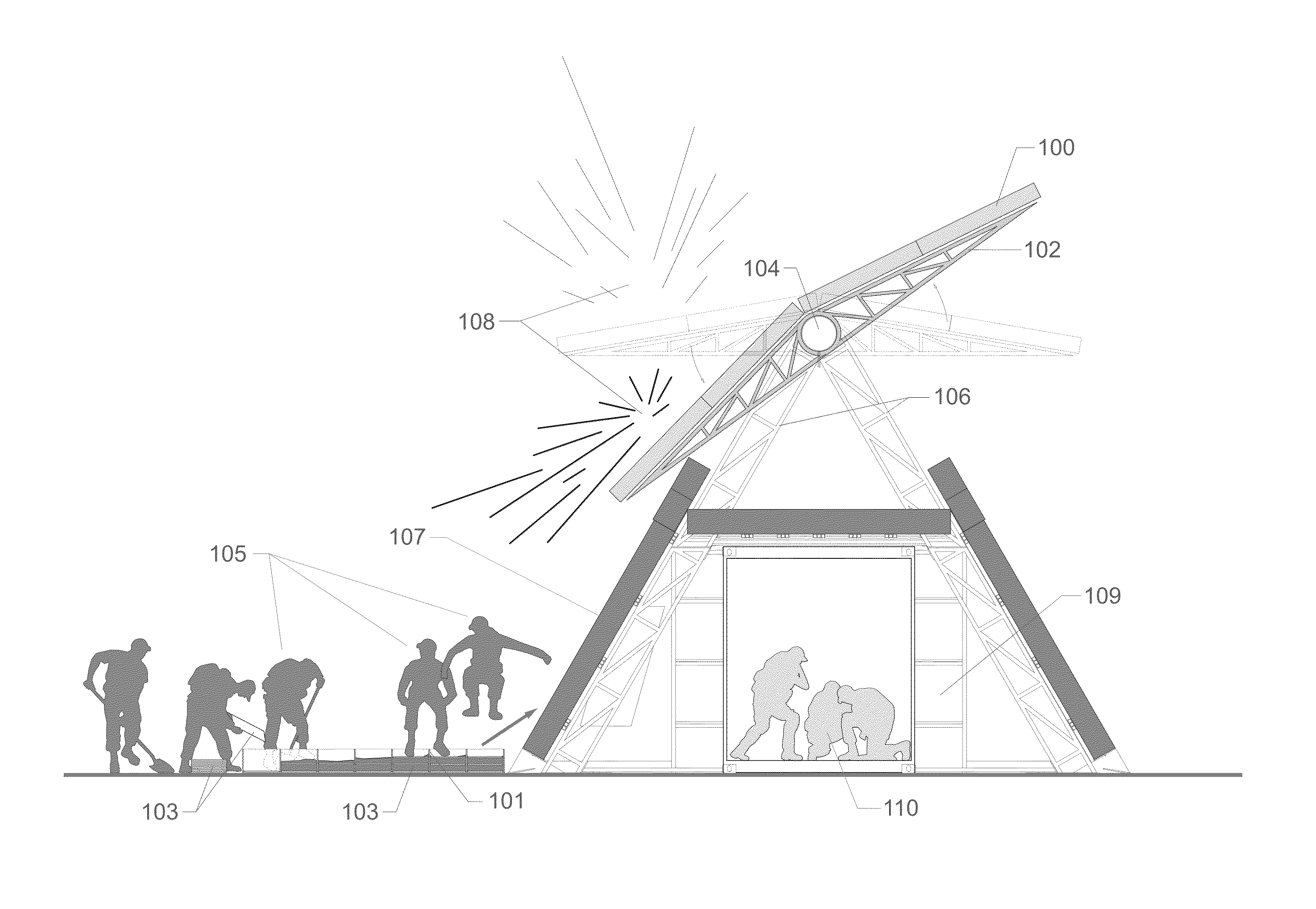Temporary shelter system
a shelter system and temporary technology, applied in the field of temporary shelter systems, can solve the problems of unsatisfactory widespread use or operations, the characteristics of conventional armored shelter types are comparatively heavy and expensive, and the shelter types are not typically provided protection from direct and indirect effects, etc., to maximize the efficiency of delivery, assembly and extraction during deployment, and the trajectory is high
- Summary
- Abstract
- Description
- Claims
- Application Information
AI Technical Summary
Benefits of technology
Problems solved by technology
Method used
Image
Examples
first embodiment
[0106]Non-Conex Based Embodiments: The structural performance of the framing system in the non-conex based shelter embodiments are self-contained and independent of the conex structural performance as shown in FIGS. 11, 12, 13 and 14. As the non-conex based embodiments are not tied to the dimensions of the conex unit, they may be of a significantly smaller or larger dimension and footprint when compared to the conex based embodiment. In the non-conex based framing system, shown in FIGS. 11 and 12, the plurality of main A-frames, the plurality of secondary lateral members, and four triangular corner frames are of similar form and function to that of the conex based embodiment that is shown in FIGS. 2, 3, 4, 5, and 6. The main A-frames are those A-frames that straddle the protected area of the shelter. The structural differences between the conex based embodiment and the non-conex based embodiment are the non-conex based embodiment's alternative form of end framing 172, 194, the absen...
second embodiment
[0108]In a non-conex based temporary shelter system, a plurality of ports with hinged shutters 188, 187 are positioned at the tops of the sloped vertical vessels 191 that compose the wall elements of the shelter. The ports are used for lighting, ventilation, weapon use, and emergency egress. The opening for the port is created by a gap between the topmost end-face of the vertical vessels 191 and the cylindrical axle 192 at the apex of the A-frame. When folded out, the shutter 187 rests horizontally on top of the vessel to protect personnel from threats 196 deflected from the sloped sides of the envelope. When folded in to the closed position, the free end of each shutter rests on a lateral member 190 below the axle-tank. The restrained end of the shutter has a pin-connection 193 attachment to the top of the vessel envelope wall. The port is at an appropriate height for personnel to observe the exterior environment if standing on the ground surface or if atop an object on ground surf...
PUM
 Login to View More
Login to View More Abstract
Description
Claims
Application Information
 Login to View More
Login to View More - R&D
- Intellectual Property
- Life Sciences
- Materials
- Tech Scout
- Unparalleled Data Quality
- Higher Quality Content
- 60% Fewer Hallucinations
Browse by: Latest US Patents, China's latest patents, Technical Efficacy Thesaurus, Application Domain, Technology Topic, Popular Technical Reports.
© 2025 PatSnap. All rights reserved.Legal|Privacy policy|Modern Slavery Act Transparency Statement|Sitemap|About US| Contact US: help@patsnap.com



